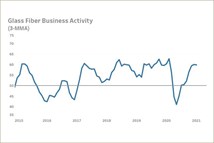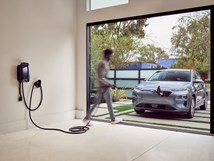Saving Pounds with Plastic-Metal Hybrids
Eaton has found ways to save weight by using plastics and metal together in differential parts, and to leverage composites exclusively for applications in its superchargers for small, sub-liter engines.
#hybrid
“We’re not a materials company,” says Alaa Elmoursi, Eaton’s (eaton.com) senior technology manager for materials and processing technology at the company’s innovation center a few miles north of Detroit. In its automotive business, Eaton is a supplier of a variety of products including valve systems, superchargers, and differentials. “We work with existing materials to select the proper additives, proper fillers to make them suited for solving customer problems like lightweighting, improving efficiency, and reducing noise and vibration.”
We’re here to discuss innovations in plastics that Elmoursi and his team of engineers, scientists and chemists are working on, but he opens the discussion this way to make it clear that when it comes to materials, he does not have favorites.
And while it might once have been a focus on a specific type of material for a specific part, a major focus area for Eaton is the combining of metal materials with plastics to create hybrid structures.
“My perception is that in 2025 we’re going to end up with hybrid structures,” Elmoursi says.
He provides an example: Eaton developed a lighter differential casing made from steel and polyphenylene sulfide (PPS) with carbon fiber. When development commenced, the initial goal was to determine where the maximum mechanical stresses were before determining where composite material could function effectively to save weight. To accomplish this, they used analysis software from Altair (altair.com). Elmoursi explains, “In this application we wanted the plastic to function as a mechanical support, but not as the primary carrier.” Instead of making the entire piece from plastic, the metal frame would provide strength in critical areas.
An initial model of the differential case was 3D printed, Elmoursi says, but the prototype was compression molded, using the PPS material with long carbon fiber.
The current differential case is made from diecast aluminum and weighs 6.4 lb., while the prototype hybrid part weighs 3.8 lb.—a 40% weight savings.
Eaton also developed a hybrid solution for its EGerodisc hydraulically operated, electronically controlled slip differential. The current cast-aluminum product is found in the Jeep Grand Cherokee. The hybrid prototype part trims the part weight by 30% by using an injection molded glass-fiber reinforced nylon, reducing the need for machining the entire part.
One of the challenges that developing hybrid components presents is making sure the bond between the composite material and metal is robust: “Our big-gest challenge today is at the interface between the metal and the composite,” he notes. To address the issue, Eaton is working with the University of Michigan to conduct cohesive zone modeling (CZM) to ensure the interfaces are sound prior to manufacturing physical parts. CZM is able to predict the behavior of structures to determine potential vulnerabilities in the material.
Eaton is also exploring the use of composite parts in its superchargers to entirely replace metal in small, sub-liter engine applications. “When we look at polymers we already know we cannot achieve the same tolerances we can achieve with metal,” Elmoursi says. Nevertheless, he argues the efficiency losses can be made up for by making cost effective products and in some cases, reducing the number of parts.
For small engines prevalent in India and China, Eaton developed prototype plastic timing gears for its superchargers that reduce weight, eliminate the need for machining, and minimize noise. The gears are made from polyether ether ketone (PEEK) material, a robust organic polymer, which tolerates high temperatures without compromising performance.
“Metal gears are lubricated and require an oil seal,” Elmoursi explains. “With plastic, you remove the oil all together by running plastic-on-plastic, and as long as you’re not wearing them out, you’re good, and they’re quieter.”
Switching to plastic gears offers a 30% weight reduction per part.
The company has also developed a rotor made with carbon-fiber weave that can handle the required 20,000-rpm rotor speed and 150°C continuous-use temperature. The composite rotor saves 40% of the weight compared to existing aluminum rotors.
The process of developing these rotors wasn’t an easy one, Elmoursi notes. It required some trial-and-error to get the shape right, a process that remains underway.
First, they took the aluminum rotor and made it into what he describes as a “Christmas-tree shape” and overmolded that to attain 20% weight savings. By altering the shape incrementally by injection molding, they eventually reached a 40% weight savings.
Right now, the rotor lobes are straight, but this year Elmoursi says his team is focused on making convoluted lobes to more closely resemble the existing aluminum rotors, while still saving significant weight.
Eaton Corporation
RELATED CONTENT
-
Revolutionary Hydrogen Storage Tank Design Could Propel H2 Deployment
Rather than storing hydrogen in a large cylindrical tank, Noble Gas has developed a conformal system
-
Plastics: The Tortoise and the Hare
Plastic may not be in the news as much as some automotive materials these days, but its gram-by-gram assimilation could accelerate dramatically.
-
On BMW Tech, VW Golf R Variant, Hyundai Elantra, and More
The forthcoming BMW flagship SUV—the 2022 iX xDrive50—has a lot of tech, some that is deliberately discrete. The Hawaiians spend a lot of money for gasoline and it would be less if they’d electrify. Euro drivers like wagons—and apparently extreme driving in them. Stellantis is spending big on going electric. And even more.











